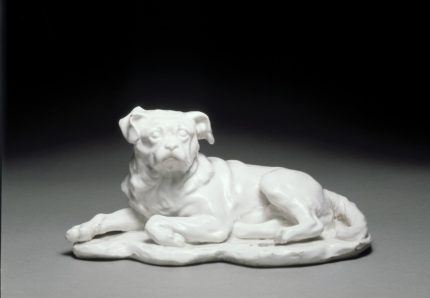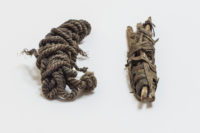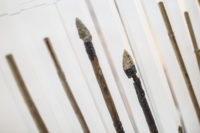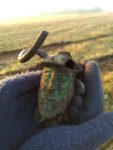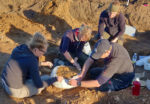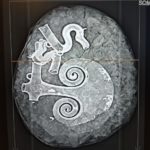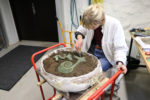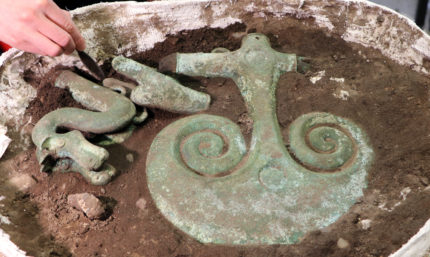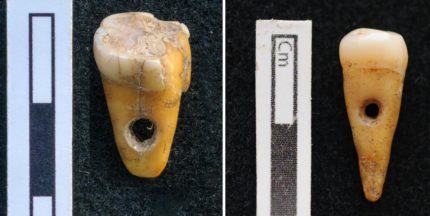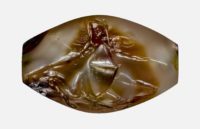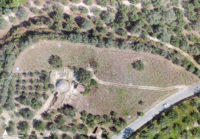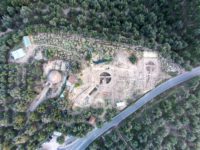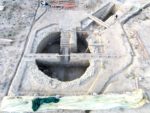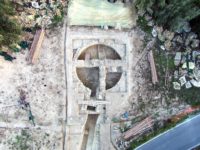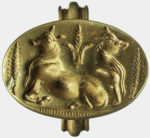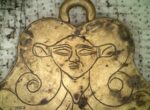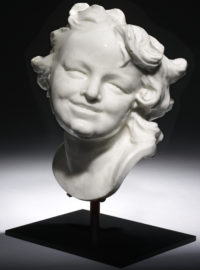 An 18th century “holy grail” of English porcelain sculpture discovered at a flea market in France has been acquired by the V&A (pdf). The 8-inch figure was found in southwest Brittany by retired English porcelain dealer Louis Woodford in 2011. He recognized its significance as an early and unique example of London porcelain manufactured by the Chelsea porcelain factory around 1746–49. There is only one other extant example of this design is in the collection of the Ashmolean Museum, but its original white glaze has been altered with colored enamel decoration.
An 18th century “holy grail” of English porcelain sculpture discovered at a flea market in France has been acquired by the V&A (pdf). The 8-inch figure was found in southwest Brittany by retired English porcelain dealer Louis Woodford in 2011. He recognized its significance as an early and unique example of London porcelain manufactured by the Chelsea porcelain factory around 1746–49. There is only one other extant example of this design is in the collection of the Ashmolean Museum, but its original white glaze has been altered with colored enamel decoration.
It was produced during the Chelsea porcelain factory’s earliest years, the triangle period (1743-1749), named after the incised triangle-shaped mark on the bottom of the wares. The milky white, shiny, glass-like glaze with surface pitting was typical of this period. The figure was slipcast in porcelain from the original clay model sculpted by premier London sculptor Louis-François Roubiliac.
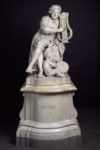 Born in Lyon, France, in 1702, Roubiliac learned his trade under Baroque sculptor Balthasar Permoser in Dresden before studying under Nicolas Coustou in Paris. He moved to London in around 1730 and worked for established sculptors before striking out on his own with a statue of Handel in 1738. Commissioned for Vauxhall Gardens, the statue was instantly famous, widely reproduced in prints for decades, elevating Roubiliac to the top echelon of sculptors in London and ensuring a thriving career primarily in portrait commissions. All of his known surviving works were made in London.
Born in Lyon, France, in 1702, Roubiliac learned his trade under Baroque sculptor Balthasar Permoser in Dresden before studying under Nicolas Coustou in Paris. He moved to London in around 1730 and worked for established sculptors before striking out on his own with a statue of Handel in 1738. Commissioned for Vauxhall Gardens, the statue was instantly famous, widely reproduced in prints for decades, elevating Roubiliac to the top echelon of sculptors in London and ensuring a thriving career primarily in portrait commissions. All of his known surviving works were made in London.
Art historical and stylistic analysis strongly suggest that Roubiliac was the creator of the original model for Head of a Laughing Child. Roubiliac was a friend of Nicholas Sprimont, the owner and founder of the Chelsea porcelain factory, and evidence suggests Roubiliac considered using Chelsea porcelain for a major sculptural commission in the first few months of the factory’s opening. Additionally, the quality of modelling and the style of the Head, which combines Italianate, French and German influences, all point to Roubiliac as the author of the work. This is supported by documentary evidence revealing Roublilac’s roots and training in both France and Dresden, where he acquired extensive knowledge of Ancient Roman and Baroque sculpture.
Roubiliac would have sculpted the head in clay approximately 20 per cent bigger than the resulting porcelain figure. From this model, multi-part plaster moulds were taken at the Chelsea porcelain factory and then used to cast several versions of the head in porcelain. These were then carefully dried in a process that saw them shrink considerably. The porcelain heads were then glazed and fired at a high temperature.
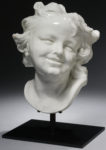 Sprimont was godfather to Roubiliac’s daughter Sophie. It’s possible that the joyous young woman captured in porcelain was modeled after Sophie. She was born in 1744 and would have been between two and five years old when the sculpture was made.
Sprimont was godfather to Roubiliac’s daughter Sophie. It’s possible that the joyous young woman captured in porcelain was modeled after Sophie. She was born in 1744 and would have been between two and five years old when the sculpture was made.
The Vauxhall Gardens statue of Handel is now in the collection of the V&A, as is another Chelsea porcelain based on a terracotta original by Roubiliac, a portrait of William Hogarth’s beloved pug, Trump. The newly acquired Head of a Laughing Child has gone on display with them in the V&A’s British Galleries.
